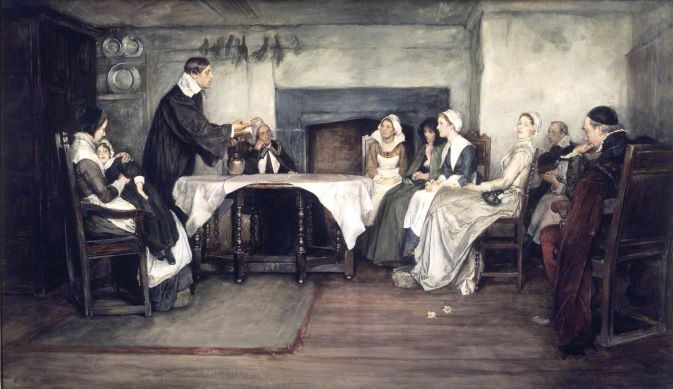ELKTON — It’s common knowledge that divorces are much easier to obtain now than they were in the past. Perhaps you have an image from an old movie of the 1940s or ‘50s in your memory of a man with a camera leaping out of a cupboard to photograph an illicit assignation. And in the early years of this country, divorces were extraordinarily difficult to obtain, but those difficulties waxed and waned over the years, according to the political climate, the influence of the church and of our mother country Great Britain.
The Puritan New England colonies seem to have had the most liberal of divorce laws, which seems antithetical coming from a group of people so austere that they did not celebrate Christmas. However, marriage was viewed by them as a civil contract, and those Puritans were nothing if not practical. Divorce in the Massachusetts Bay Colony was legalized in 1629.
However, no divorces were granted until 1638, when Mrs. James Luxford sued on account of her husband’s bigamy. This became our country’s first divorce. These northern colonies also allowed more grounds for divorce, including adultery, desertion and abuse. However, women were required to prove multiple grounds while men needed only one. Most other colonies allowed only one ground — adultery — while occasionally granting a divorce for desertion or for marriage within the prohibited degrees of consanguinity (i.e. marriage with too close a relative).
During the first 200 or so years of the legal system, divorce petitions were voted on by the legislature or sent to the governor of the colony/state. In Maryland, divorces were granted by the General Assembly. Even at a time when there was little privacy in a community, a person must have been desperate to air his or her problems at that level of government. Imagine having the entire legislature knowing the ins-and-outs of your business. Also, divorce was not what we now call “absolute,” but a type of legal separation in which the parties could not wed another while the former spouse still lived.
Maryland, settled as a Catholic colony, was granting only about 30 divorces per year by the early 1800s. However, as more and more people resorted to divorce to solve their marital woes, the legislature turned the hearing of divorce petitions over to the courts in 1842. By 1851, legislative divorce was made illegal.
In reviewing the records available on Maryland Archives Online, a very early Cecil County divorce petition came to light. It reads as follows:
“Saturday May 17th 1701. The Councill sate present as yesterday. The petition of Edward Laddamore of Cecill County praying that an act might be passed for the divorcment of him the
said Edward Laddamore & Elizabeth his wife and declaring the children of her the said Elizabeth begotten during her elopement to be illegitimate was here read and sent to the house with a proposed bill upon that subject.”
If Edward hoped for a speedy decision, he was disappointed. When the session resumed later in the day after a recess, the following was recorded in minutes:
“By the House of Delegates, May the 17th 1701, the petition of Edward Laddermore recommended from his Excellency and Councill to this house with a bill therewith sent was here read & considered and forasmuch as the prayer of the petitioner is of so high a nature that the house do not think fitt to pass the bill sent with the petition.”


